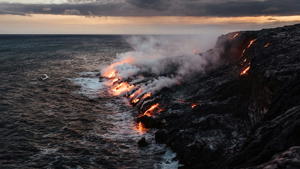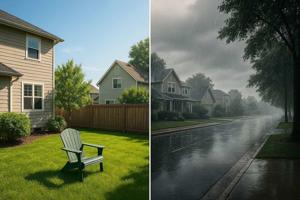10-Day Weather Forecast for Los Angeles
Introduction:
If you're planning a visit or just want to stay ahead of the weather in Los Angeles for the next 10 days, you're in the right place. Known for its sunny skies and temperate climate, LA weather can still surprise you with cooler mornings, unexpected coastal fog, and the occasional rain during the winter months. Our 10-day Los Angeles weather forecast will keep you informed and prepared.
What to Expect in Los Angeles' 10-Day Weather Patterns
Los Angeles enjoys a Mediterranean climate, characterized by warm, dry summers and mild, wet winters. Over a typical 10-day period, you can expect a general trend of clear skies and minimal rain, especially during the summer months. However, during certain times of the year, particularly in early summer, you may experience morning fog along the coast, a phenomenon known as June Gloom. This overcast weather typically clears by afternoon, especially in coastal areas like Santa Monica and San Pedro.
- Temperature Trends:
- Daytime highs: Temperatures will range from 72°F to 85°F (22°C to 29°C) over the next 10 days. The warmest days are likely to be at the beginning of the week, with a slight drop toward the weekend.
- Nighttime lows: Nighttime temperatures will be cooler, averaging between 58°F and 65°F (14°C to 18°C), providing a pleasant contrast to daytime heat.
- Precipitation:
Rain is rare this season, though an occasional shower may appear toward the end of the week. Historically, Los Angeles averages only 0.02 inches (0.5 mm) of rain during the summer months.
How is the 10-Day Weather Forecast Determined?
Weather in Los Angeles is influenced by both oceanic and atmospheric factors. Meteorologists use advanced models, such as the ECMWF and GFS, to predict weather changes based on satellite data, ocean currents, and wind patterns. The unique coastal geography of LA, combined with the nearby San Gabriel Mountains, plays a significant role in temperature variations and wind patterns. Data from OpenWeatherMap and NOAA provide real-time updates and insights that contribute to an accurate long-term forecast for Los Angeles. These models can predict shifts in pressure systems that affect wind and rain, providing a reliable 10-day weather forecast.
Special Weather Phenomena in Los Angeles
One of the defining features of Los Angeles weather during the summer months is June Gloom. This phenomenon occurs when cool, moist air from the Pacific Ocean brings in a dense marine layer, resulting in overcast skies in the morning, especially in June and early July. The fog typically dissipates by midday, leaving sunny and clear skies for the rest of the day. It’s important to note that this coastal fog is more common in areas like San Pedro, Santa Monica, and Malibu, and less common in inland areas.
Stay Updated with the Latest Los Angeles Forecasts
Planning your week in Los Angeles means staying flexible. Although LA is known for its stable, sunny weather, being prepared for cooler mornings, coastal fog, or even a light drizzle can make all the difference. Bookmark this page to stay updated with the latest 10-day weather forecast for Los Angeles. We offer accurate, up-to-the-minute updates to ensure you’re always prepared, whether you're heading to Hollywood, exploring Griffith Park, or catching some waves at Venice Beach.
Frequently Asked Questions (FAQ)
- What is the average temperature in Los Angeles during summer?
During summer, daytime temperatures range from 72°F to 85°F (22°C to 29°C), with cooler evenings around 58°F to 65°F (14°C to 18°C). - Does it rain often in Los Angeles?
Rain is infrequent, especially in summer. Winter months see most of the annual rainfall, with February being the wettest month. Summer months are usually dry, averaging less than 0.02 inches of rain. - What is "June Gloom"?
June Gloom refers to the morning fog that rolls in from the coast during late spring and early summer, especially in June. It often dissipates by midday, leaving clear skies. - How accurate is the 10-day forecast for Los Angeles?
Using data from sources like OpenWeatherMap and NOAA, long-term forecasts are updated every 6 hours to provide the most reliable and accurate information. While short-term changes are always possible, the 10-day forecast offers a dependable outlook for planning purposes.



